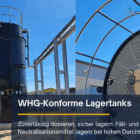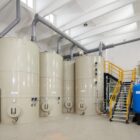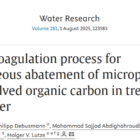Surface water refers to all natural water resources that are located on or near the earth's surface, such as rivers, lakes, ponds, reservoirs and oceans. In industrial water treatment, surface water is an important source that is used for various processes due to its availability and volume. However, the use of surface water requires thorough treatment, as it is often contaminated with suspended solids, organic compounds, pathogenic microorganisms and other impurities.
This article provides a comprehensive explanation of surface water, including its properties, typical contaminants, treatment challenges and the technologies used in practice to make surface water usable for industrial applications.
Table of contents
Definition and properties of surface water
Surface water includes all water sources that are not protected by rock layers or soils and are therefore strongly influenced by environmental factors, climatic conditions and human activities.
Properties of surface water
Fluctuating quality:
- Depending on the season, precipitation, runoff and proximity to residential or industrial areas.
High content of suspended solids:
- Suspended matter such as sediments, clay, sludge or organic material.
High biological activity:
- Contains algae, bacteria, viruses and protozoa.
Variable chemical composition:
- Dissolved salts, nutrients such as nitrate and phosphate and heavy metals.
Sensitivity to soiling:
- Direct inputs of wastewater, fertilizers or chemicals can have a major impact on water quality.
Typical contaminants in surface water
1. suspended matter and sediments
- Suspended solids consist of clay, sand or silt particles that are introduced by erosion or runoff.
- Challenge: Clogging of filters, pumps and pipes.
2. organic substances
- Dead plant remains, humic acids and dissolved organic substances.
- Challenge: Increase in chemical oxygen demand (COD) and formation of biofouling.
3. pathogenic microorganisms
- Viruses, bacteria and protozoa that enter the water through agricultural or urban runoff.
- Challenge: Health risks and hygiene requirements.
4. nutrients (eutrophication)
- Nitrogen compounds (NO₃-, NH₄⁺) and phosphates.
- Challenge: Promotes algae growth and impairs water quality.
5. heavy metals and toxic compounds
- Mercury, lead, cadmium or pesticides, which can originate from industrial effluents.
- Challenge: Toxicity and danger to humans and the environment.
Technologies for the treatment of surface water
The treatment of surface water requires a multi-stage process that is tailored to the specific requirements of the industry.
1. mechanical pre-treatment
- Technologies:
- Rakes and sieves: remove coarse solids such as leaves, branches and garbage.
- Sand and gravel separators: Separate heavier sediments and particles.
- Objective: Protection of downstream systems and reduction of suspended matter pollution.
2. coagulation and flocculation
- Process: Addition of precipitants (e.g. iron or aluminum salts) and flocculants in so-called CP systems.
- Effect:
- The finest particles and dissolved organic substances are agglomerated into larger flocs that can be removed more easily.
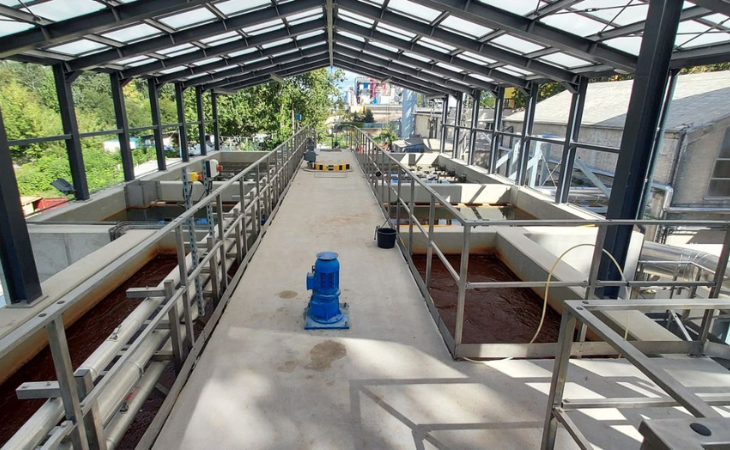
Photo: One of our river water treatment plants with coagulation and flocculation, ALMA BHU LHPS
3. sedimentation and flotation
- Technologies:
- Lamella clarifiers: Accelerate the separation of suspended solids.
- Dissolved air flotation: Removes grease, oil and finely dispersed particles using micro air bubbles.
- Objective: Reduction of solids and COD content.
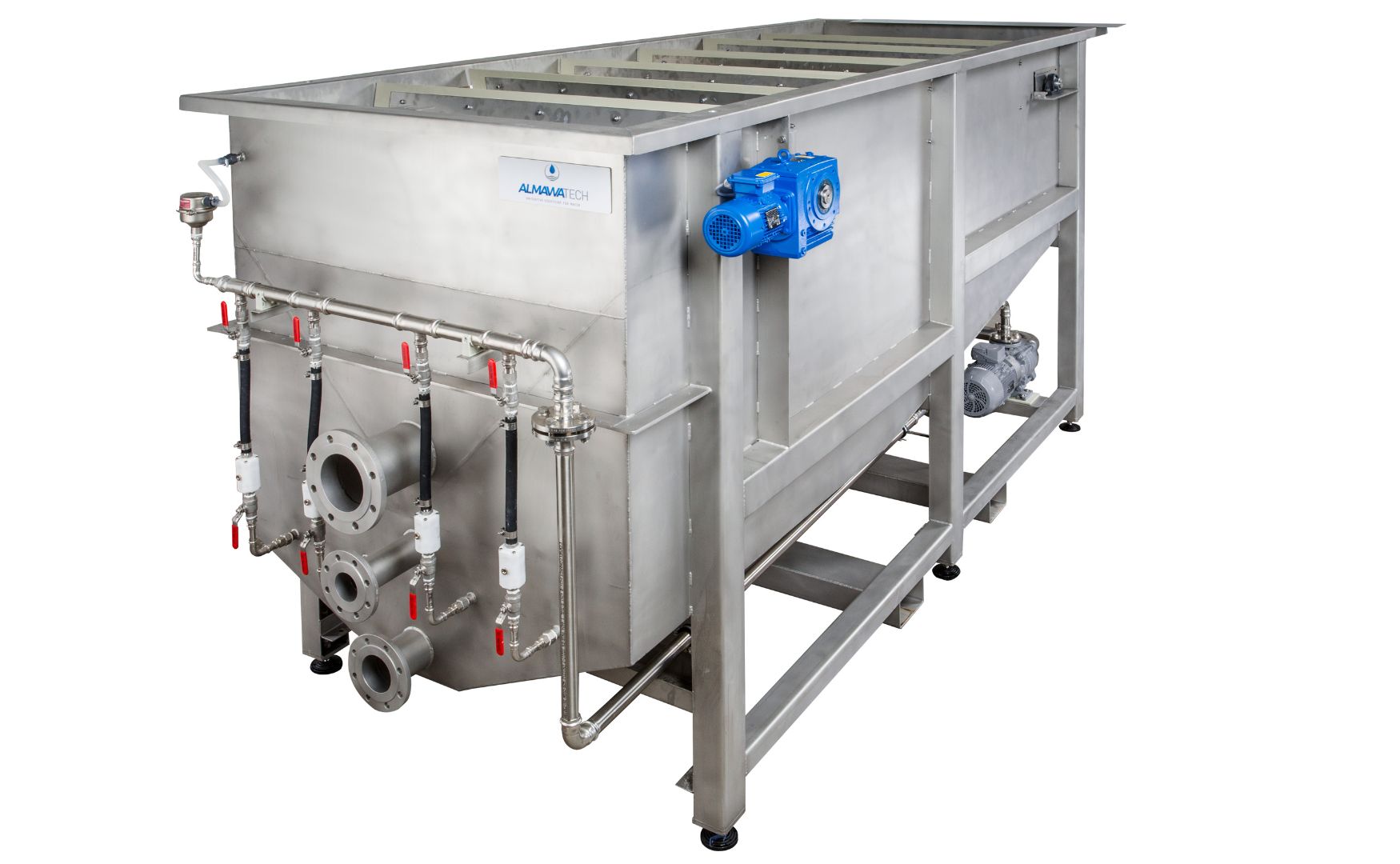
Photo: Our ALMA NeoDAF flotation system is also successfully used for phosphate elimination from a swimming lake in Offenbach
4. filtration
- Technologies:
- Sand and multi-layer filters: Remove the finest particles and sediments.
- Ultrafiltration (UF): Removes microorganisms, colloidal substances and suspended solids.
- Objective: To ensure consistent water quality for downstream processes.
5. disinfection
- Technologies:
- UV disinfection: Inactivates microorganisms by destroying their DNA.
- Chlorination: Effective germ killing with residual protective effect.
- Objective: To ensure microbiological safety.
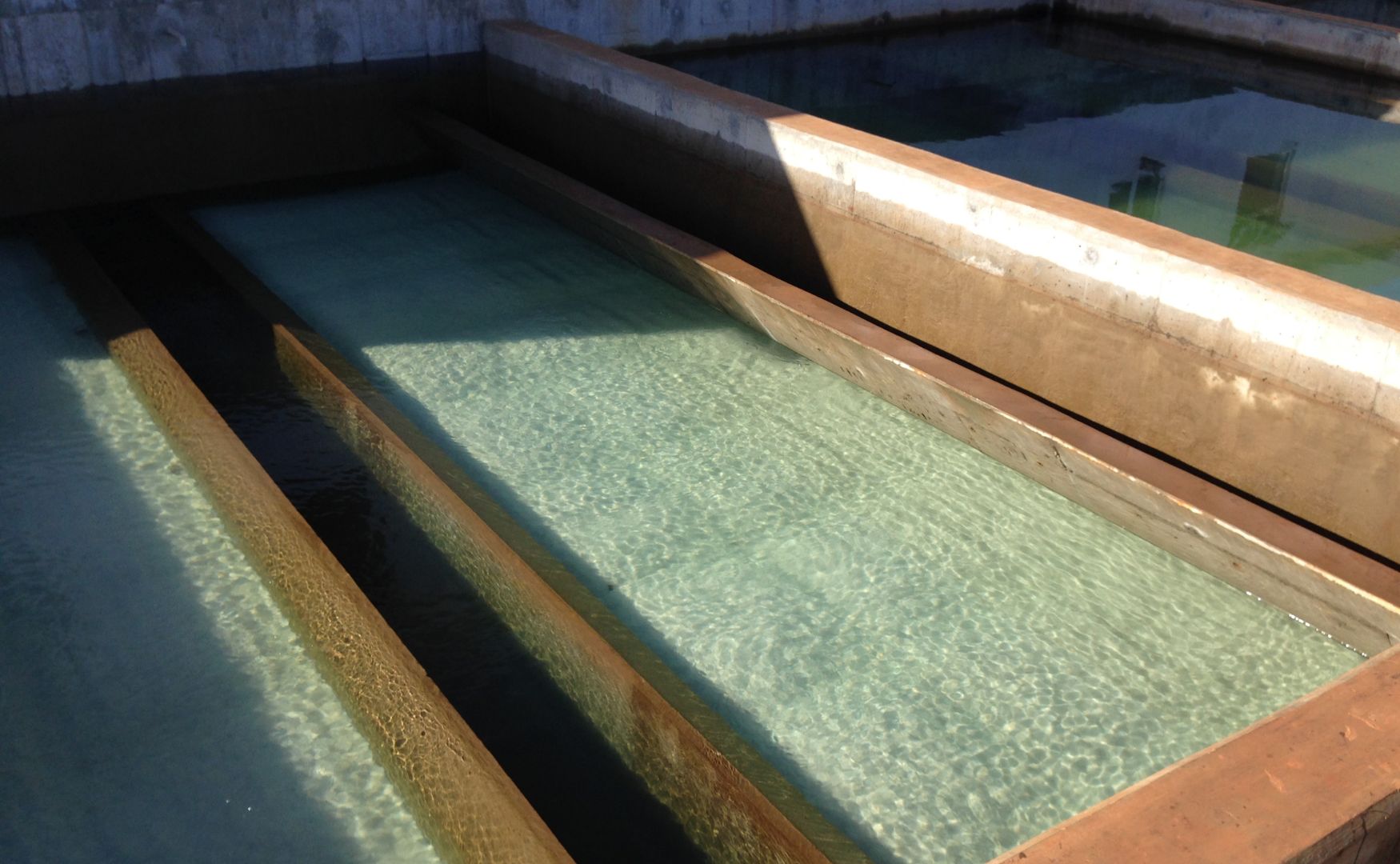
Photo: Our ALMA BHU SMF filtration system in concrete construction for river water treatment
The treatment of surface water for industrial applications is complex and places high demands on the technologies used:
High variability of water quality:
- Fluctuating loads require flexible and adaptive treatment processes.
High proportion of suspended solids:
- Requires multi-stage filtration and sedimentation processes.
Microbiological contamination:
- Requires reliable disinfection methods such as UV radiation or chlorination.
Biofouling:
- Nutrients and organic substances promote the growth of microorganisms, which leads to deposits in systems.
Legal requirements:
- The treatment process must meet strict requirements in terms of wastewater emissions and water quality.
Water recycling from surface water
In many industries, the recycling of surface water is becoming increasingly important in order to reduce water consumption and minimize wastewater flows.
- Pre-treatment: Removal of suspended solids and organic loads by filtration and precipitation/flocculation.
- Biological treatment: Degradation of organic compounds and nutrients in biofiltration systems or membrane bioreactors.
- Membrane technologies: Use of ultrafiltration and reverse osmosis to recover high-purity water.
Conclusion
Surface water is an important resource for industrial water and wastewater treatment. However, its variable quality and complex loads place high demands on treatment technologies. By using advanced mechanical, chemical and biological processes, surface water can be transformed into a reliable resource for industrial applications. The continuous development of water treatment technologies makes it possible to use this valuable resource sustainably and efficiently.
For further information on our products, please feel free to contact us at any time!




